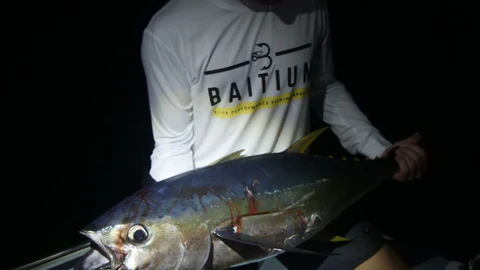As we move further into 2024, the fishing community is witnessing the rise of several innovative techniques that are captivating anglers and reshaping traditional fishing methods. Two of the most prominent techniques gaining traction are the Bait Finesse System (BFS) and hover strolling.
Bait Finesse System (BFS)
The Bait Finesse System (BFS) is revolutionizing the way anglers approach finesse fishing. This technique involves using specialized lightweight baitcasting gear to fish with finesse baits and techniques typically associated with spinning tackle. Originally developed in Japan, BFS was designed to target highly pressured trout and bass that require delicate presentations. It allows anglers who prefer baitcasting reels to enjoy benefits such as better hooksets, greater control, and enhanced accuracy while still utilizing light lines and lures. The BFS method is perfect for those who want to combine the precision of baitcasting with the subtlety needed for finesse fishing.
Hover Strolling
Hover strolling, also known as hover shotting or spine rigging, is another technique that is rapidly gaining popularity. This method involves rigging a soft plastic bait with a nail weight and a specially designed offset hook. When twitched, the lure exhibits a side-to-side darting action, allowing it to remain at a consistent depth without rising. Hover strolling is especially effective in clear water and when targeting specific casting spots identified using electronics. It excels at enticing neutral or pressured fish that might be wary of traditional lures moving through their strike zone. With the development of purpose-built hooks, jigheads, and integrated rigs, hover strolling is proving to be deadly for smallmouth bass, largemouth bass, and panfish.
These innovative techniques are opening new avenues for anglers, offering fresh challenges and opportunities for mastery.
Demographic Changes and Their Impact on Fishing
Fishing in 2024 is not solely defined by advancements in gear and techniques but also by significant demographic shifts within the angling community. Understanding these changes is crucial for everyone involved in the sport, from casual hobbyists to industry professionals.

Surge in Popularity
In recent years, fishing has seen a resurgence in popularity, contributing significantly to the broader trend of outdoor recreation becoming an integral part of the national economy. This increased interest in fishing offers more opportunities for community-building, resource sharing, and the overall growth of the sport.
Urbanization and Fishing
With the rise of urbanization, the fishing community faces both challenges and opportunities. The key is to make fishing accessible and appealing to city residents. Urban fishing programs, partnerships with local clubs to increase access to nearby waters, and tackle shops catering to the needs of urban anglers are all essential strategies. Integrating fishing into the urban lifestyle holds immense potential for expanding the sport’s reach.
Growing Diversity
The projected growth in diversity within the United States presents a unique opportunity for the fishing community to become more inclusive and representative. Efforts to connect people from various backgrounds with fishing can emphasize its universal appeal as a way to spend quality time with loved ones, relax, and enjoy nature. Breaking down barriers and stereotypes can lead to a richer, more diverse community of anglers.
As the fishing landscape evolves, staying abreast of these trends and demographic changes will be key to fostering a vibrant and inclusive angling community in 2024 and beyond.
Image/Source: Baitium





